Key takeaways
- Edmodo provides a user-friendly platform that fosters communication among educators, students, and parents, supporting a virtual classroom environment.
- Effective communication is crucial in activist teaching, enabling trust, empathy, and productive dialogue around social justice topics.
- Key features of Edmodo, such as assignment management and small group functionalities, enhance collaboration and engagement in learning.
- Challenges include limitations in fostering spontaneous dialogue and ensuring equal participation, highlighting the need for careful navigation of communication dynamics.
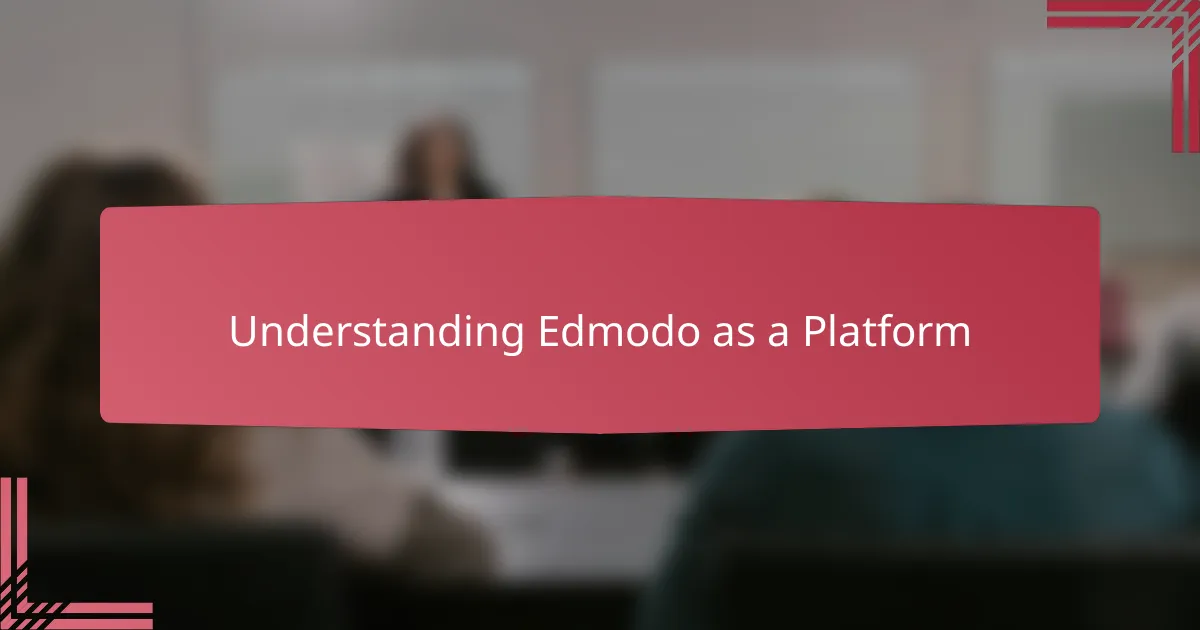
Understanding Edmodo as a Platform
Edmodo positions itself as a social learning platform designed specifically for educators, students, and parents to connect in a digital space. From my experience, the interface feels familiar—much like popular social media—but tailored to classroom needs, which can ease the transition for both teachers and students.
I often find myself wondering how a platform like Edmodo balances simplicity with functionality. It offers tools for assignments, quizzes, and discussions without overwhelming users, yet it prompts me to ask: does it truly foster meaningful communication, or merely facilitate task submission?
What sticks with me is how Edmodo creates a controlled environment where teachers can maintain authority while encouraging student interaction. This balance is tricky, but in my practice, it has helped build a virtual classroom culture that feels safe and connected, even when we’re miles apart.
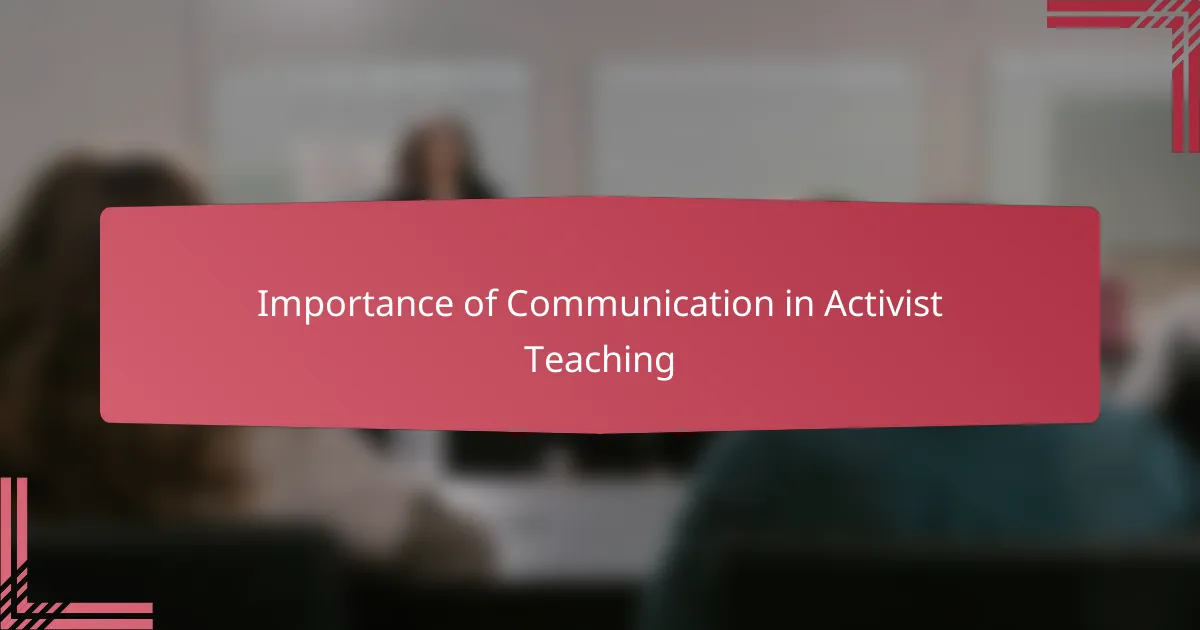
Importance of Communication in Activist Teaching
Communication in activist teaching isn’t just a tool—it’s the lifeline that connects ideas to action. I’ve found that without clear, open dialogue, the powerful messages we aim to share can easily get lost or misunderstood. Have you ever tried to inspire change without truly hearing your students’ voices? It’s frustrating, and it can stall the momentum of learning.
When I reflect on my own teaching journey, I realize how crucial purposeful communication is for building trust and community around social justice topics. It creates a space where difficult conversations can happen without fear, encouraging critical thinking and empathy. Isn’t that the heart of what activist teaching strives for?
I sometimes wonder if we fully appreciate how much our interactions shape student engagement. Every question we ask or response we give can either shut down or spark a student’s passion for change. That’s why I believe communication isn’t just important; it’s fundamental to making activist teaching effective and transformative.
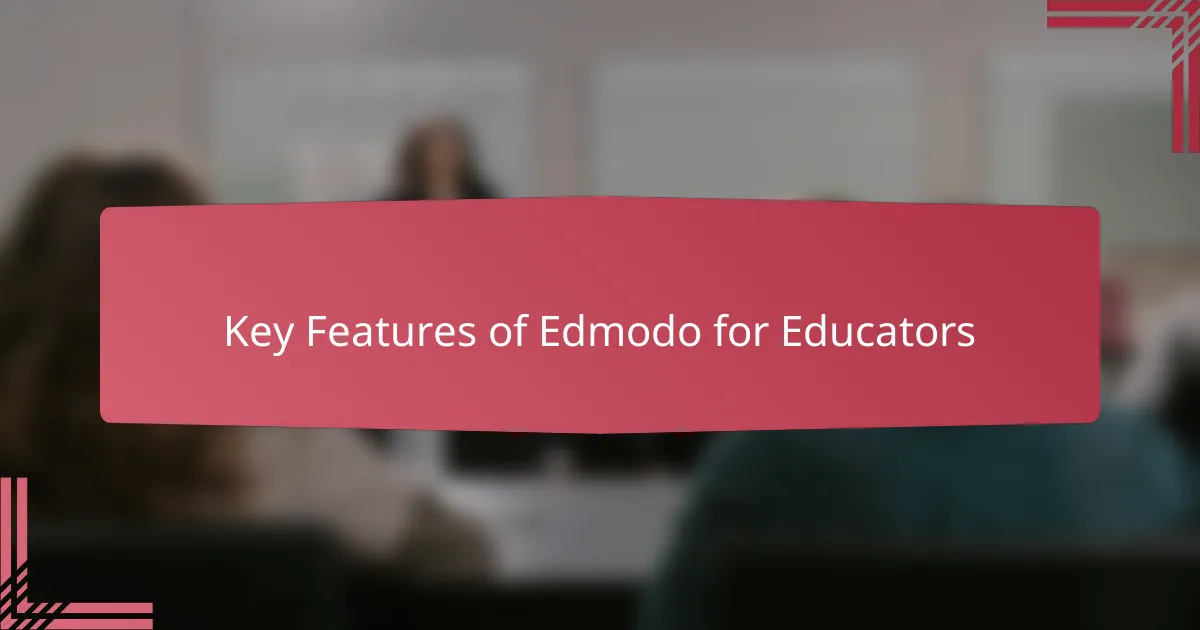
Key Features of Edmodo for Educators
One feature I appreciate about Edmodo is its assignment management system. It lets me post assignments with clear deadlines and track student submissions effortlessly. Have you ever struggled to organize paperwork or lost track of who turned in what? Edmodo helps avoid that chaos by keeping everything in one accessible place.
Another aspect that stands out is the messaging and notification system. I’ve noticed it keeps communication flowing without being intrusive. Students get timely reminders, and I can send updates directly, which feels more immediate and personal than an email. Doesn’t that kind of direct line make remote teaching feel a little less distant?
Finally, the platform’s ability to create small groups within a class is a game-changer. I’ve used it to divide students into teams for projects or discussions, fostering collaboration and peer learning. It makes me wonder why more tools don’t build in this kind of flexibility—after all, learning thrives when students connect in smaller, focused circles.
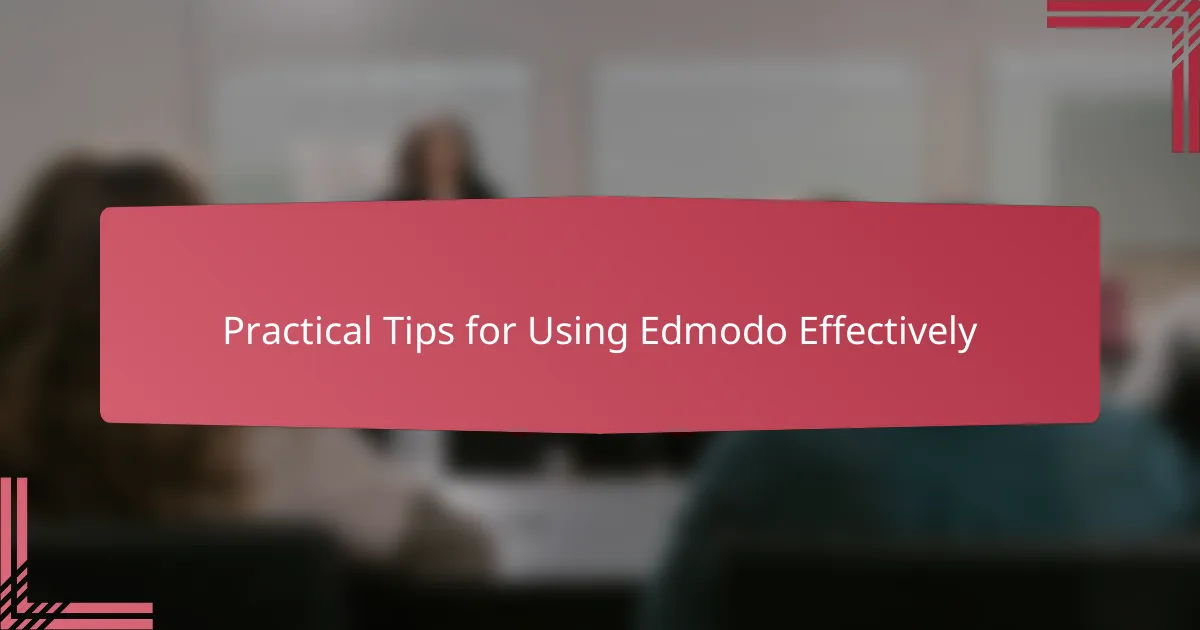
Practical Tips for Using Edmodo Effectively
One practical tip I’ve found essential is setting clear guidelines for communication right from the start. When I established expectations about respectful dialogue and timely responses, the virtual space felt more orderly and welcoming. Have you noticed how clear rules can transform a chaotic chat into a meaningful conversation?
Another strategy that’s worked well involves regular check-ins through Edmodo’s polling feature or quick quizzes. These tools not only keep students engaged but also give me real-time feedback on how well they’re grasping the material. It’s like having a pulse on the classroom without interrupting the flow of learning.
I also recommend using Edmodo’s small group function intentionally. In one of my classes, creating focused groups sparked vibrant discussions I hadn’t seen in whole-class settings. It made me realize how powerful breaking larger groups into smaller communities can be for deeper connection and collaboration. Have you tried this approach yet? It might change the way your students interact online.
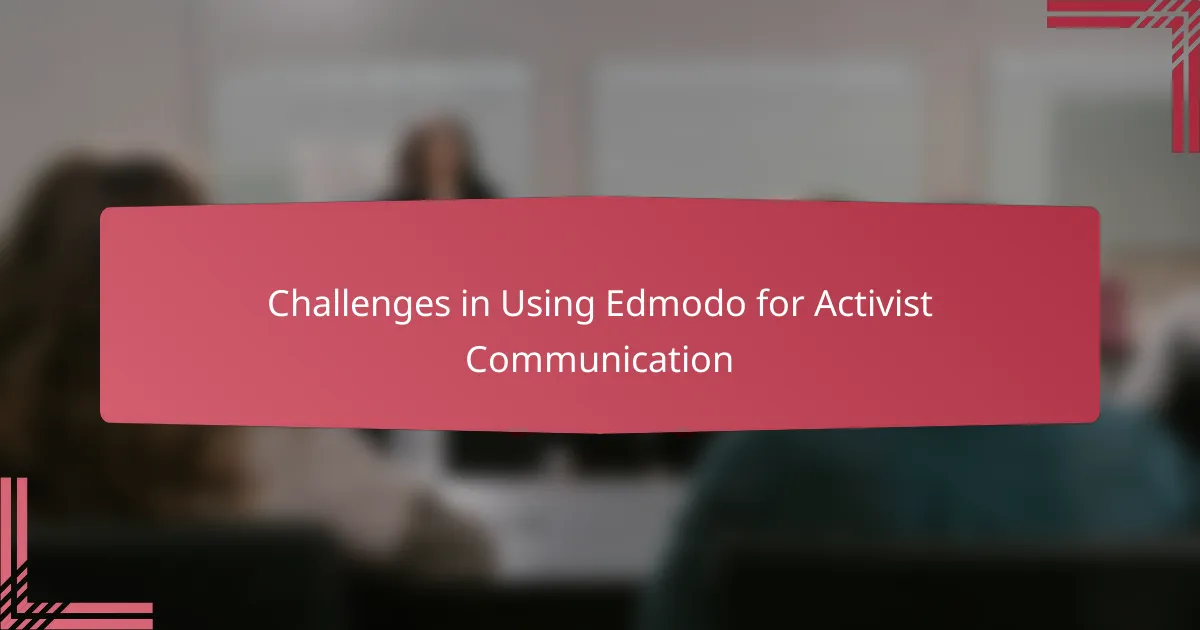
Challenges in Using Edmodo for Activist Communication
Sometimes, I find Edmodo’s structure a bit limiting when trying to foster the kind of open, activist dialogue that thrives on spontaneity and deep personal engagement. Have you noticed how its preset formats can box conversations into rigid threads, making it harder to explore complex social issues fully? In my experience, this can dampen the passion and fluid exchange that activism demands.
Another challenge I’ve run into is the platform’s moderate moderation tools. While it’s great for maintaining a respectful environment, I worry that important, sometimes uncomfortable conversations get stifled—an essential tension in activist teaching. How do we balance creating safe spaces with encouraging the raw honesty necessary for real change? Edmodo doesn’t always make this easy.
Then there’s the issue of reaching all voices equally. I’ve seen some students hesitate to speak up or engage on Edmodo, perhaps due to digital access or comfort levels, which can mirror real-world inequities. Isn’t it ironic that a tool designed to connect us can sometimes highlight the very gaps we’re trying to close? Navigating this disparity is a constant, and sometimes frustrating, part of using Edmodo for activist communication.
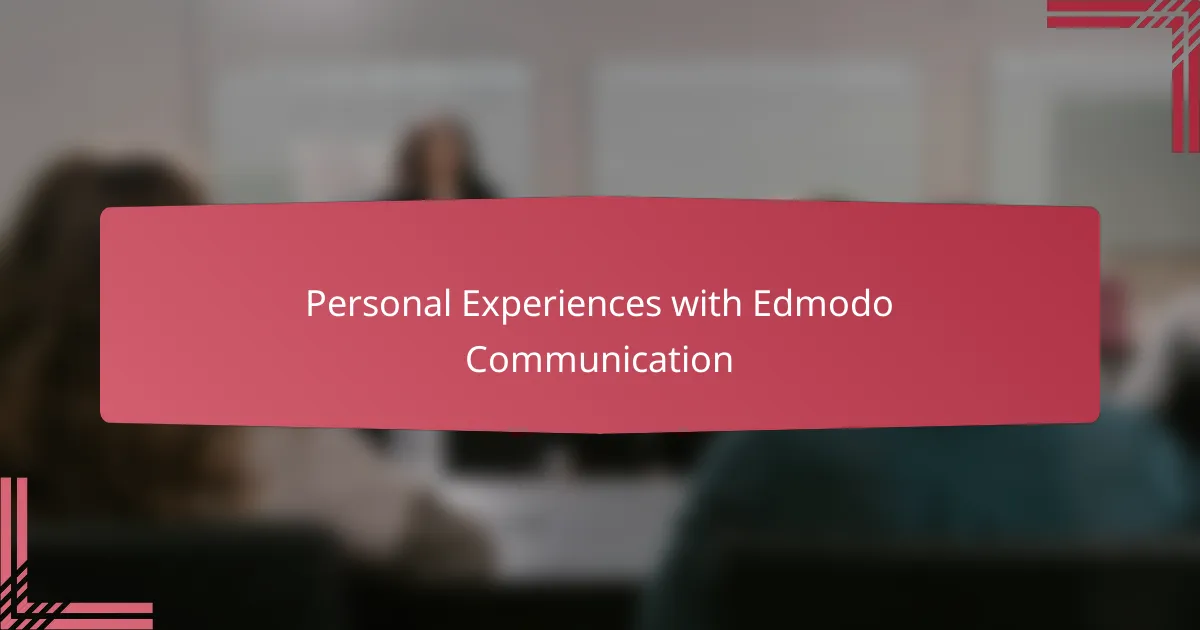
Personal Experiences with Edmodo Communication
In my early days using Edmodo, I remember feeling cautiously optimistic about how it might open new channels with my students. There was one moment that stuck with me: a quiet student who rarely spoke up in class suddenly shared thoughtful reflections in a private message. It was a small victory but felt like discovering a hidden door to authentic connection.
Yet, I’ve also faced moments of frustration when messages got lost in the mix or responses came slower than I hoped. Have you ever waited anxiously for a student to reply, only to wonder if your message was even seen? That waiting game made me realize how much digital communication demands patience and trust—qualities that aren’t always easy to nurture online.
Despite these hurdles, I appreciate how Edmodo helped me maintain consistent dialogue outside school hours. It became my virtual classroom hallway where quick check-ins and encouragements happened naturally. That continuity, I believe, is what kept relationships alive even when physical distance stretched between us.